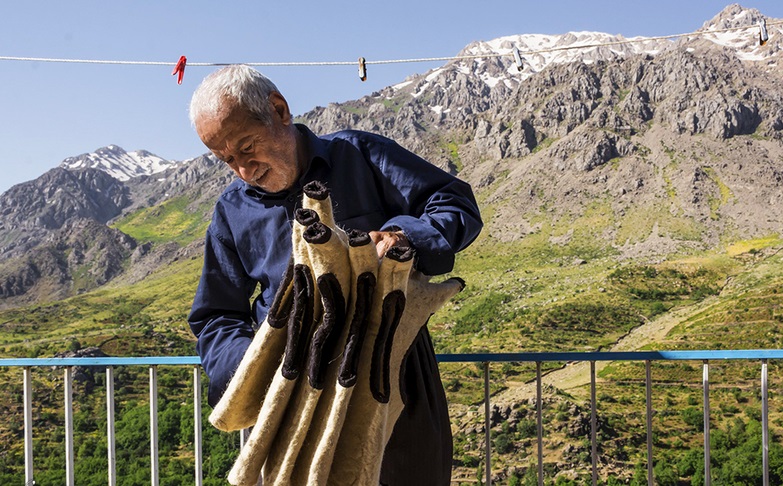Faranji, is a traditional woolen garment worn in the mountainous regions of Kurdistan to protect against harsh weather conditions. With a history spanning 2800 years, Faranji has become an iconic symbol of Kurdish craftsmanship. Originally made from natural wool, it is now produced in small factories in the Hawraman region. Its cultural significance, practicality, and unique design make it a cherished garment among the Kurdish people, symbolizing resilience and heritage.
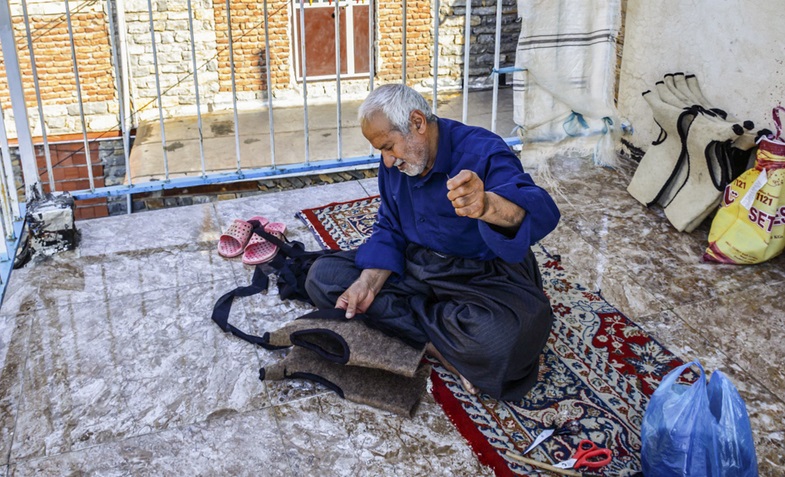
The Historical Roots and Craftsmanship of Faranji
Faranji, is a traditional Kurdish garment that dates back 2800 years. Originating from the mountainous areas of Hawraman in Kurdistan in both Iraq and Iran, this woolen cloak has been an essential part of the Kurdish wardrobe for centuries. The garment is specifically designed to protect wearers from the extreme cold and heat prevalent in these regions, as well as the health issues that come with such conditions, like chest infections, back pain, and kidney ailments.
What sets the Faranji apart is the way it is produced. It is woven from natural materials such as goat and sheep wool in small, traditional factories across Kurdistan. Each Faranji is a labor of love, made by skilled craftsmen who have passed down their weaving techniques through generations. The materials used not only make the garment durable and resistant to harsh weather but also ensure that it aligns with Kurdish environmental values, as wool products naturally decompose and do not pollute the environment.
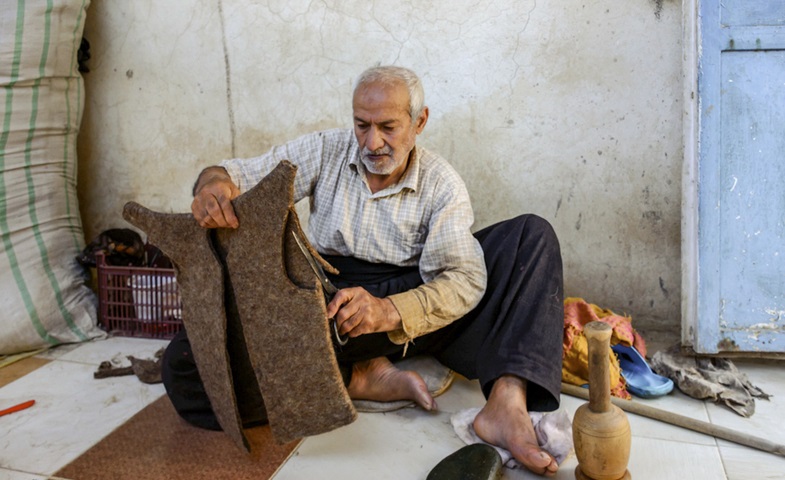
Variations in Design: Functionality and Symbolism
Faranji comes in two main styles: one with a hood (gosh-dar) and one without (be-gosh). Historically, the choice of style had deep cultural implications. When the tribe’s leader was deemed just and capable, people wore the hoodless Faranji as a sign of respect. However, when the leader’s ability was questioned, the hooded version was worn as a form of protest. This gesture symbolized dissatisfaction with leadership, and it often led to the leader being replaced after three to seven days.
The hooded Faranji had practical applications as well. Its hood made it easier to carry the garment and prevented rifles or other weapons from slipping off the shoulder, making it an essential accessory for those who bore arms. One of the most fascinating features of the Faranji is its bulletproof capability when wet, adding an unexpected layer of protection during times of conflict.
In addition to these practical aspects, Faranji comes in three prominent colors: red, black, and white. These colors not only symbolize different tribes and regions but also reflect the wearers’ sense of pride in their heritage. Whether hooded or not, Faranji remains a staple in Kurdish culture, particularly in the colder months.
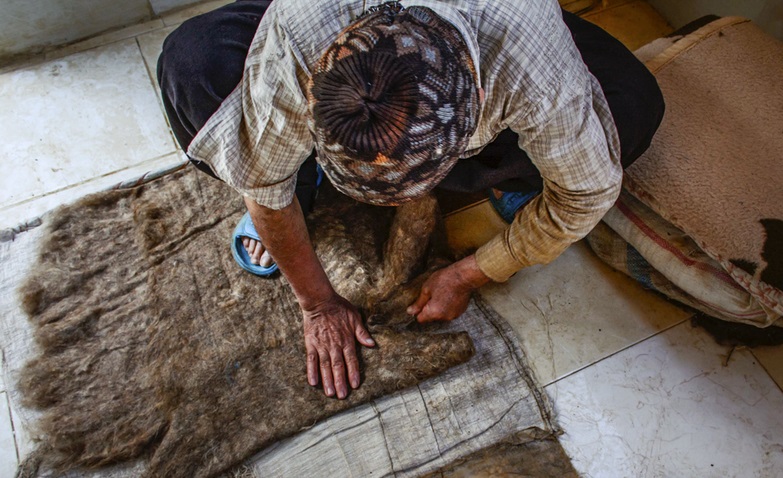
The Importance of Wool in Kurdish Clothing
Wool is a central material in the production of Kurdish traditional garments, and the Faranji is no exception. The wool used in these garments comes from local sheep and goats, specifically a breed known as “Mereze” famous for its soft and shiny fibers. These fibers are not only used to create the Faranji but are also woven into other traditional items such as gloves, socks, scarves, and even saddle blankets.
In the villages of Hawraman, Halabja, Slemani, Saqez, Baneh, and other cities of Kurdistan, factories still use traditional spinning techniques to transform raw wool into thread, which is then woven into fabric. The process is entirely manual, using weaving looms with four inputs to create intricate designs. Each piece of fabric is a testament to the craftsmanship of Kurdish weavers and their dedication to preserving this ancient tradition.
Besides clothing, wool is also used in the production of Kurdish household items such as bedrolls, prayer rugs, and carpets, which are highly prized for their durability and warmth. One particularly unique use of wool is in the making of “Chokherank,” a type of men’s formalwear that is a source of pride in Kurdish festivals and ceremonies. Whether for practical everyday use or as part of formal dress, wool remains at the heart of Kurdish textile traditions.
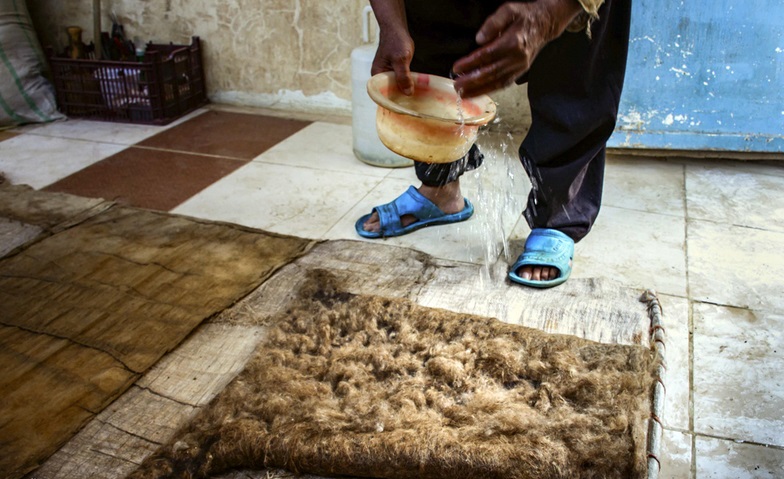
Preservation of Cultural Heritage Through Clothing
Faranji, alongside other Kurdish garments like the ” Chokherank” and the woolen belts worn around the waist, continues to play a vital role in the preservation of Kurdish identity. Despite the pressures of modernity, the people of Kurdistan have held onto their traditional clothing styles, which reflect not only their history but also their connection to the land and nature.
One striking example is the woolen belt, which is made from sheep’s wool and worn to protect against kidney infections and back pain during the cold winter months. This practical accessory also serves as a reminder of the holistic approach the Kurdish people take towards their health and wellbeing, incorporating elements of nature into their daily lives.
Similarly, woolen leg wraps, known as “puzwana,” were historically used to protect against snake bites, keep trousers from getting snagged while traversing mountainous terrain, and provide insulation against the cold. Although modern clothing has largely replaced some of these traditional items, they remain an important symbol of Kurdish resilience and ingenuity.
In addition to preserving cultural practices, Kurdish clothing has gained international recognition for its beauty and craftsmanship. Kurdish garments have won first place in numerous international festivals for their uniqueness, elegance, and diversity. The garments are not merely a point of pride for the Kurdish people but also serve as a bridge between past traditions and the present day.
The Faranji, with its intricate design, cultural symbolism, and practical applications, stands as a testament to the resilience and adaptability of the Kurdish people. As part of a broader collection of traditional Kurdish garments, it embodies the rich history and heritage of the region. Despite modern influences, the Faranji and other traditional items continue to thrive, supported by local artisans and cherished by those who wear them. The longevity of the Faranji speaks not only to its practicality but also to its cultural significance, as it continues to be a revered garment in Kurdistan’s mountain regions.
- Images were taken by a Kurdish-Iranian photojournalist Shiva Mohammedi.

